There are a lot of Valencian ball games, due basically to the great adaptation of the games relating to space. Some are played often, as in the case of “Stairs and Rope” (Escala i Corda)” and “The raspall”.
As it would take a long time to talk about all of them, we are only going to explain superficially the most applicable in educational centers: “The raspall”.
“The raspall”
- This game can be played in outdoor and indoor sports buildings (even in the street). It’s a very intense game. It is not important if the ball bounces more or less on the ground, and knocking the ball on the ground or in the air is allowed.
- The game may be played either indoors on a court called "Trinquet", like you can see in this picture:
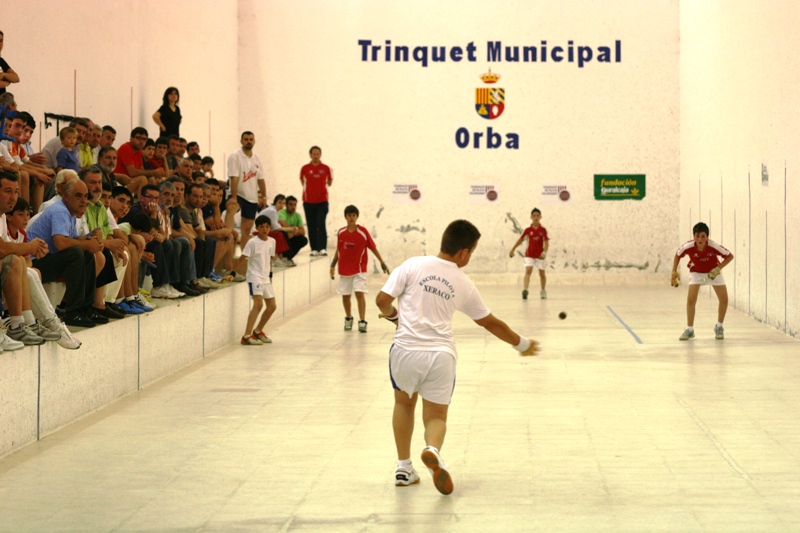
or outdoors in the street, with some minor changes to the rules.
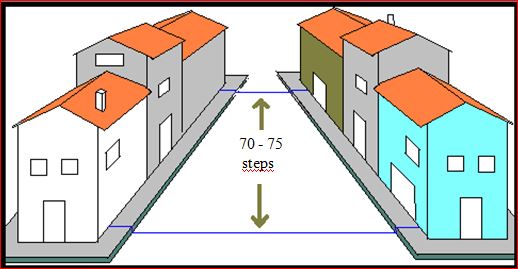
- The space of game in the street is usually about 60 meters (about 70-75 steps).

- The playing area is divided into two halves called the "serving" and "receiving" fields.
- To play "Raspall" on the street two lines of "fifteen" are painted separate about 70 -75 steps, which marks the field of playing.
- 40 steps from the “serving line”, the “foul line” is painted.
- On one side is the serving team, and the other side is the receiving team.
- Among its distinguishing features the ball is allowed to bounce as many times as desired. This rule makes the game one of the most energetic variants of “Valencian ball”, as the players must frequently hit the ball close to the ground.
- If played outdoors, the chosen street must be flat and straight, around 60 m long and 8 m wide. It doesn't matter much if there are some irregularities such as balconies, traffic signals, since they may be used as traps for tricky effects on the ball. The ends of the street are called the "end lines", that is, if the ball bounces on the ground behind them without being returning to the air, the defending team loses the "fifteen". Spectators may sit behind those "end lines" or on one of the sidewalks.
- The game starts by taking one of the two teams, bouncing the ball before the "serving line" and knocking it towards the other field without passing the "foul line". The other team will return the ball alternatively, and the team that gets the ball to bounce on the ground at the back of the "end line" of the opponent without being returned to the air, wins "the fifteen" (name used to refer to the attainment of the point) will obtain a point.
- At the beginning of each game the roles are reversed, i.e, the serving team has to receive, and will not receive again until the next game change.
- The scoreboard is counted in a way similar to tennis:
Valencian Ball:
0 quinzes: NET (Nil)
1 quinze: QUINZE (Fifteen)
2 quinzes: TRENTA (Thirty)
3 quinzes: VAL (Forty)
4 quinzes: JOC (Set or Game).
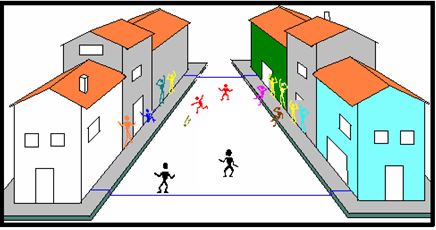
Rules:
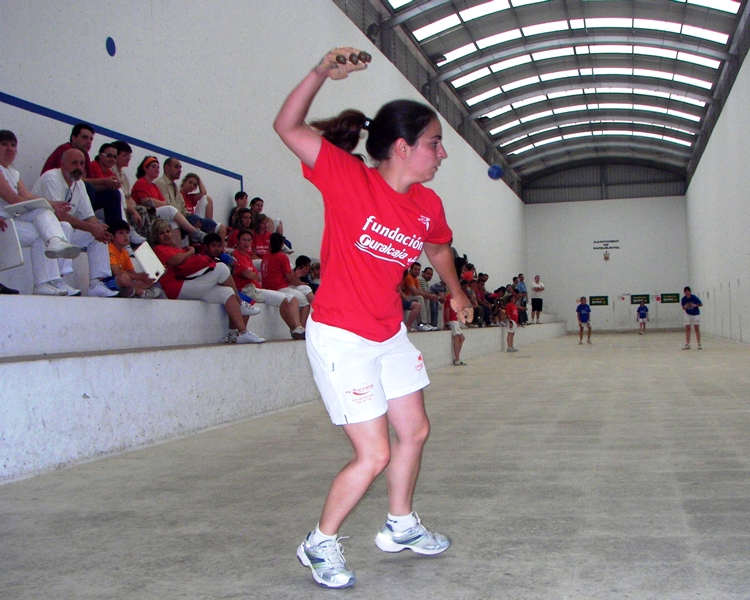
Serving the ball
Raspall can be played in one-on-one matches, but it's most often played as a team sport. Teams have 2 or 3 players. Opposing teams do not necessarily have the same number of members. Evenly matched sides make the game more interesting to people betting on the match, so matches will often oppose three average players against a two-some consisting of a strong and weak player.
The winner of a "Raspall" match is the team that wins 25 points (if playing in a trinquet), or 40 points (if on a street). Points are counted in 5 blocks called jocs. That is, a match is played until 5 or 8 "jocs" are obtained by a team. Every "joc" consists of four quinzes (fifteen): 15, 30, val and joc. Whoever wins the "val" gets the "joc" and scores 5 points.
Teams play face to face throwing each other the ball with one hit of the hand until one of them is not able to send it back to the opponents ("foul" by the loser and so a quinze for the winner), or the ball is sent to a place where it can't be thrown back (direct quinze), because the ball is sent behind the opponent's "end line" (if it's played on a street).
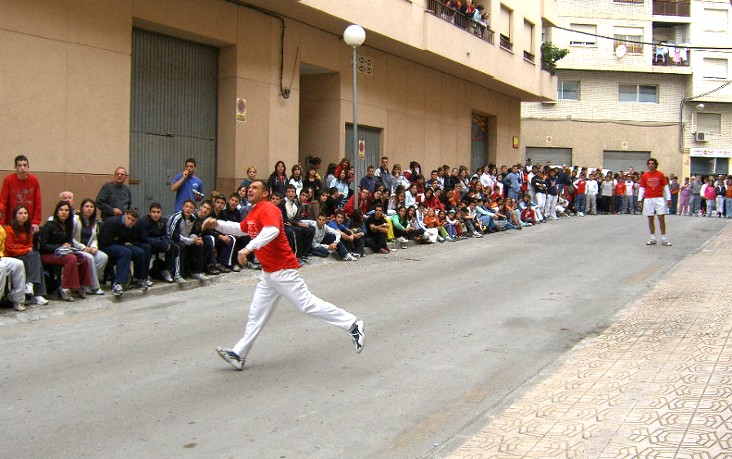
Raspall match
The "quinze/fifteen" begins when a player serves by bouncing the ball on a marked stone from the "street line" (on a street). It doesn't matter if the ball bounces on the ground as many times as needed.
If the ball goes to the spectators on the street's sidewalk the ball is immediately "blocked", that is, it will be placed in the middle of the street where it was blocked and a player of the opposing team will hit it from there. This way, it's not convenient that balls get blocked, since players can throw it up far from the "end line".